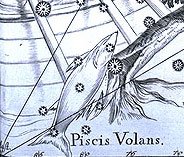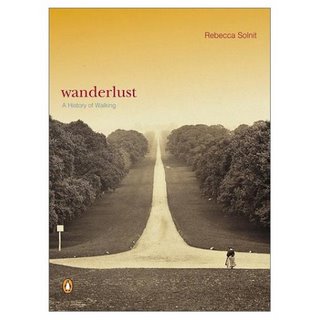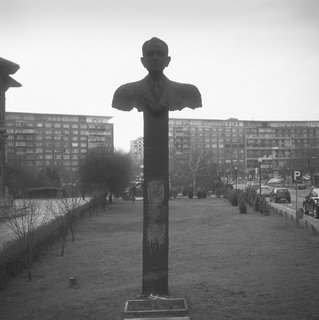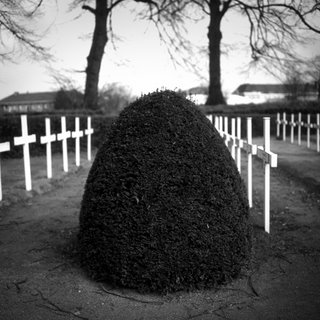
It's sounds like the latest Dan Brown-clone, but it's actually the photo-project that currently is dwarfing everything else photography-related in my mind. The idea is to take an episode in the life of the early romantic German poet Friedrich Hölderlin as the starting point for both a conceptual and photographic exploration. I may turn this project into the basis for a Doctorate in the Arts. In the Anglo-Saxon academic world, a D.A. is already in existence for a longer time. The D.A. differs from the Ph.D. in its shift in emphasis from theoretical research (though research is required) to the advanced study or practice of a specific (artistic) discipline. In our country, D.As are very new. The first one was awarded at the KULeuven only last year to Martin Vanvolsem, who accidentally also worked on a photographic subject (“The experience of time in photographic images, see http://associatie.kuleuven.be/ivok/docindekunsten.htm#vanvolsem).
But the D.A. is obviously not the main thing. It is just another alibi to engage with a particular subject matter and an incentive to, metaphorically speaking, keep the focus over a longer period of time. I think the combination of conceptual thinking and practical engagement fits well with my intellectual temperament. In my professional life I am doing this all the time. However, I am curious to see how well the logic carries over to the photographical domain. At this point in time I have no clue how a Hölderlin-centered narrative and a Hölderlin-focused series of images can be meaningfully connected with one another. I see solving that particular problem as one of the main tasks in this whole endeavour.
But let’s start at the beginning. The beginning is a very specific episode in Hölderlin’s life. The year is 1802 and he has taken on an assignment as a house tutor for the children of the German consul in Bordeaux. Early in the year he makes the trip on foot to the southwest of France: a rough trip over the snowy Auvergne. But already after a few months, in May, he takes the decision to leave his posting and to make the return journey back to Germany. When in the early summer he emerges in Stuttgart, all his friends are shocked by his appearance: haggard, disheveled, confused. The journey seems to constitute a turning point in Hölderlin’s life. From then onwards his slide towards mental illness seems to be unstoppable. Nevertheless it is also a period of uncommon artistic productivity. Between 1802 and 1806 some of his greatest hymns and odes see the light. His language and imagery reach a poignant precariousness and intensity. Hölderlin’s symbolic universe is about to collapse under the weight of the Real.
This biographical episode is the starting point. However, it is a controversial episode with sources disagreeing about the actual trajectory and what really happened. Hölderlin himself reported about the journey as a tremendous experience. He spoke about having seen “die traurige einsame Erde”, about being deeply touched by “das gewaltige Element, das Feuer des Himmels”, about being transfixed by Apollo. But according Hölderlin scholar Pierre Bertaux it is unlikely that the outbound journey would have been done on foot. He claims the poet would have reached Bordeaux after an 18-day journey by coach. I don’t know how much evidence there is to back up Bertaux’ claims.
Also the journey back home remains clouded in mystery. The accepted version is that Hölderlin went north to Paris rather than northeast across the Auvergne. In Paris he visited the collection of antique sculptures – deftly supplied by an incessantly looting Napoleon – and went on to Strasbourg and further to Stuttgart. However, just a few days ago I was quite astonished to read in the Collected Works, (Sattler edition) that Hölderlin from Strasbourg would have followed the Rhine upstream, first towards the Bielersee (where JJ Rousseau spent some time writing his Confessions) and then further onwards to the Gotthard and the Lukmanierpasses in Central Switzerland. From the Lukmanier he descended southwards, ostensibly with a plan to go to Italy and beyond, to Greece. However, he quickly returned and made his way across the Adula Alps to the Rhine confluence again. From there it went more or less straight back to his starting point. In any case, this is a significant deviation from whatever other source I have consulted earlier on this matter and underlines that reconstructing the journey is already a focus for research in itself.
To the biographical I would then add an experiential layer to it by retracing Hölderlin’s steps in his return from Bordeaux. Given the uncertainties surrounding the actual journey, it doesn’t make sense to try and aim for an “authentic” reconstruction. A straight line between Bordeaux and Stuttgart goes across the Auvergne, the Morvan, the Vosges and the Schwarzwald. This looks like a very rewarding trip, roughly 850 km long, that could be done in about 40 days. Of course, it would be tempting to add the long detour over the Swiss Alps but that would amount to more than 1300 km and taken 2 months at least. Practically speaking this would take the whole venture into the realm of the impossible.
I have been wanting to do a long distance walk for a very long time and the line Bordeaux-Stuttgart has been pencilled in my old Britannica atlas ever since I got interested in Hölderlin, twenty years ago. I want to experience the synchronisation of mind and body, the alignment of thinking with the rhythm of bipedal propulsion and how that colours my perception of the world. In her “Wanderlust”, Rebecca Solnit writes that “walking (...) is a state in which the mind, the body and the world are aligned, as though they were three characters finally in conversation together, three notes suddenly making a chord. Walking allows us to be in our bodies and in the world without being made busy by them. It leaves us free to think without being wholly lost in our thoughts.” Hölderlin’s life can be read as a succession of “Gewaltmärsche”, both in the physical and in the symbolic world, and I am convinced that the experience of being immersed in a foot journey for weeks on end will significantly deepen my perspective on the poet’s state of mind in this fateful episode.
His work would add yet another element to this project. We need to draw in and read his work in our attempt to make sense. I would like to limit myself to one single poem from the period immediately following up on the journey. The one I would spontaneously zoom into, despite its problematic history (we don’t know when it was written), is “In lieblicher Blaüe”. In this hymn one seems to find clear echos of a journey, evoked by ravishing and lively images. Hölderlin also mysteriously refers to the notion of “Bild” and “Bildsamkeit des Menschen” which is tantalising when one has a photographic project in mind. Inevitably, the work breaks out of its northwestern European geographical orbit and spills over into Hölderlin’s deeply loved Mediterranean world.
In that sense it could make sense to expand the geographical scope of the photographic project beyond the foot journey proper. Hölderlin has only seen the Mediterranean basin before his mind’s eye but nothing would stop me to venture there and try to capture some of these mental images with my camera. Later this spring I will be joining a photo workhshop to the Eolian Islands, off Sicily’s north coast. This could be a good opportunity to photographically come to grips with the Hölderlin theme for the first time. This location is all the more interesting as it evokes the poet’s fragmentary drama “Der Tod des Empedokles”, taking its cue from the pre-Socratic philosopher who supposedly died by jumping into the crater of the Etna volcano. Exploring these linkages would also start to blur the boundaries between the Mediterranean project and the Hölderlin project. It is fascinating to see how these projects evolve and morph over time thereby mimicking the rhizomatic structure of our symbolic order.
So we have the biography, the journey and the work. Remains the image as the final cornerstone of the edifice to be erected. The challenge is not to become engulfed by the conceptual miasma surrounding this most mysterious of poets. The shadow of Heidegger weighs heavily (notably on “In lieblicher Blaüe ...”). Complete libraries have been written in a fruitless attempt to understand a splitter of the magic that is embedded in this work. Hölderlin is a monster. If you’re not careful, it chases you in a labyrinth from which you will never emerge. I need to find a natural way to produce meaningful photographic images from the confrontation between biography, journey and work. I need to find simple clues that guide me in making photographic choices. Trouble is I like to get things right from the beginning. I want to know from the very start what camera, format, emulsion I will use to shape my perspective. There are hardly any practical considerations: is it possible to do a 900 km trip with large format gear? Sure, if you really want to. So, basically everything’s open. I have been entertaining a lot of options. The simple, restful square; 4x5” pinhole; large format colour polaroid. Or similar to Depardon’s “Errance”: every image upright in a 6x9 format, reflecting the upward striving character of Hölderlin’s poetry. I need space to show “das Feuer des Himmels”! I haven’t taken any decisions yet. But maybe I need to get learn to keep my options open and let choices evolve, as we go? I hesitate. I love photographic projects which show a compelling coherence dictated by simple formal choices. Again, Depardon’s “Errance” is a very good example. Let’s see. Ideally, by the end of April, before my departure to Sicily, I’ll have more clarity (but I doubt it).
 Many years ago I read Bruce Chatwin’s “The Songlines”. The Aboriginal people’s practice of imposing a symbolic topography – a complex set of stories – onto a real landscape so as to at once keep the memory alive and securely navigate over long distances I found captivating. A few years later I picked up a CD with an eponymous string quartet, written by the South African composer Kevin Volans (now resident in Ireland). Volans’ chamber works have given me a lot of listening pleasure since and recently I felt the urge to reacquaint myself thoroughly with these and other works.
Many years ago I read Bruce Chatwin’s “The Songlines”. The Aboriginal people’s practice of imposing a symbolic topography – a complex set of stories – onto a real landscape so as to at once keep the memory alive and securely navigate over long distances I found captivating. A few years later I picked up a CD with an eponymous string quartet, written by the South African composer Kevin Volans (now resident in Ireland). Volans’ chamber works have given me a lot of listening pleasure since and recently I felt the urge to reacquaint myself thoroughly with these and other works.  Recently I have written a little Amazon-review of Rebecca Solnit’s “Wanderlust – A History of Walking”. Although this book primarily offers a political perspective on the last 300 years of walking, Solnit also writes intelligently about the phenomenology of bipedal propulsion. And this is also valuable for photographers, at least for those who like to exercise their craft on foot.
Recently I have written a little Amazon-review of Rebecca Solnit’s “Wanderlust – A History of Walking”. Although this book primarily offers a political perspective on the last 300 years of walking, Solnit also writes intelligently about the phenomenology of bipedal propulsion. And this is also valuable for photographers, at least for those who like to exercise their craft on foot. 

 I have been taking Italian lessons for a while, over the phone (in fact, it's skype). This is a little text I wrote as a subject for a recent lesson. My Italian teacher (who is in Torino) and I corrected it during the session. All remaining errors are my own responsibility, of course. On the lefthand side a tongue-in-cheek reference to Empedocles' nature philosophy ...
I have been taking Italian lessons for a while, over the phone (in fact, it's skype). This is a little text I wrote as a subject for a recent lesson. My Italian teacher (who is in Torino) and I corrected it during the session. All remaining errors are my own responsibility, of course. On the lefthand side a tongue-in-cheek reference to Empedocles' nature philosophy ...
